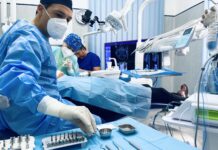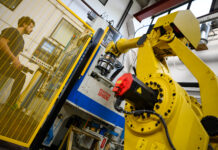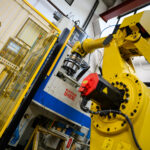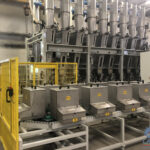The goal of knee prosthetic surgery is to relieve pain and restore the functionality of a damaged joint by resurfacing it with a prosthetic implant. While total knee replacement remains an effective solution for patients suffering from widespread osteoarthritis or diffuse osteochondral damage, today there are surgical alternatives that, in certain specific cases, can be far more appropriate and less invasive. In particular, patients with osteoarthritis or osteochondral degeneration limited to a single compartment of the knee may be candidates for a unicompartmental knee prosthesis.
“This surgical option allows for treatment of only the affected compartment, preserving the rest of the joint, maintaining all ligaments, and offering a faster and less invasive recovery. Moreover, robotic surgery enables both total and unicompartmental replacements to be performed with maximum precision and in a minimally invasive manner,” says Dr. Paolo Barbadoro, Orthopedic Surgeon and Trauma Specialist, who discusses innovations in knee prosthetic surgery in this in-depth interview.
by Roberta Imbimbo
Dr. Barbadoro, what is a unicompartmental prosthesis?
In a world where orthopedic surgery continues to evolve, the unicompartmental knee prosthesis undoubtedly represents one of the most promising innovations. Unlike traditional total knee replacements, which involve replacing the entire joint, the unicompartmental prosthesis focuses solely on the compartment affected by the disease, leaving the other two healthy compartments untouched. It is a minimally invasive procedure, suitable for both young, active patients and older individuals with localized arthritis in a single part of the joint.
During the surgery, which typically lasts 30–40 minutes, the damaged cartilage in the affected compartment is replaced using next-generation biocompatible and hypoallergenic materials such as Oxyinum and Titanium. These advanced materials restore the original shape of the joint, ensure optimal functionality, and preserve the healthy cartilage, bone, and ligaments.
What are the advantages of a unicompartmental prosthesis over a total replacement?
One of the main benefits of unicompartmental prostheses is that the surgeon treats only the damaged part of the joint, preserving all ligaments. In a total knee replacement, the anterior cruciate ligament—and sometimes the posterior—are sacrificed, whereas in unicompartmental procedures these ligaments are preserved, enhancing joint stability and natural movement.
The less invasive nature of the procedure results in less pain, faster recovery, and reduced blood loss. Transfusions are almost never needed, and postoperative complications are minimized. Recovery times are significantly shorter, allowing patients to return more quickly to daily activities.
Another undeniable advantage is that prosthesis revision (as implants typically last 15–20 years) is less complex and risky compared to revising a total knee replacement.
Another significant advancement in prosthetic surgery is the use of 3D printing to create customized implants. Can you tell us more about this?
Technological innovations in prosthetic surgery aim to offer increasingly personalized approaches to optimize recovery and knee functionality. Thanks to 3D printing, customized prostheses can now be created to perfectly match the patient’s anatomy and address cartilage wear.
With this technology, the implant is designed based on the patient’s unique anatomical dimensions using custom cutting guides and tailored components. In the future, this approach may even allow for the preservation of cruciate ligaments in total knee replacements.

At the same time, robotic surgery is playing a key role in optimizing prosthetic procedures.
Absolutely! Robotic surgery allows for millimeter-level precision in both planning and performing the operation. Orthopedic robots are equipped with highly advanced tools and rely on CT-based planning with 3D reconstruction. This allows surgeons to make more accurate cuts and place total or unicompartmental knee prostheses (as well as hip prostheses) with precision down to the degree and millimeter, thus reducing the margin of human error.
In knee surgery, extension and flexion spaces are measured to ensure optimal ligament balancing tailored to the patient.
Unsurprisingly, this kind of surgery has transformed how orthopedic procedures are performed, with a positive impact on both the surgical process and patient experience. Greater precision, faster recovery times (patients typically regain over 90 degrees of flexion within the first week), and reduced risk of complications are just some of the many benefits this technology offers, making it an increasingly popular choice in knee prosthetic surgery.
With continuous advancements in medicine and technology, the outcomes achieved through these advanced techniques are increasingly promising, improving long-term quality of life and functionality for patients.
For more info: https://www.paolobarbadoro.it

























































